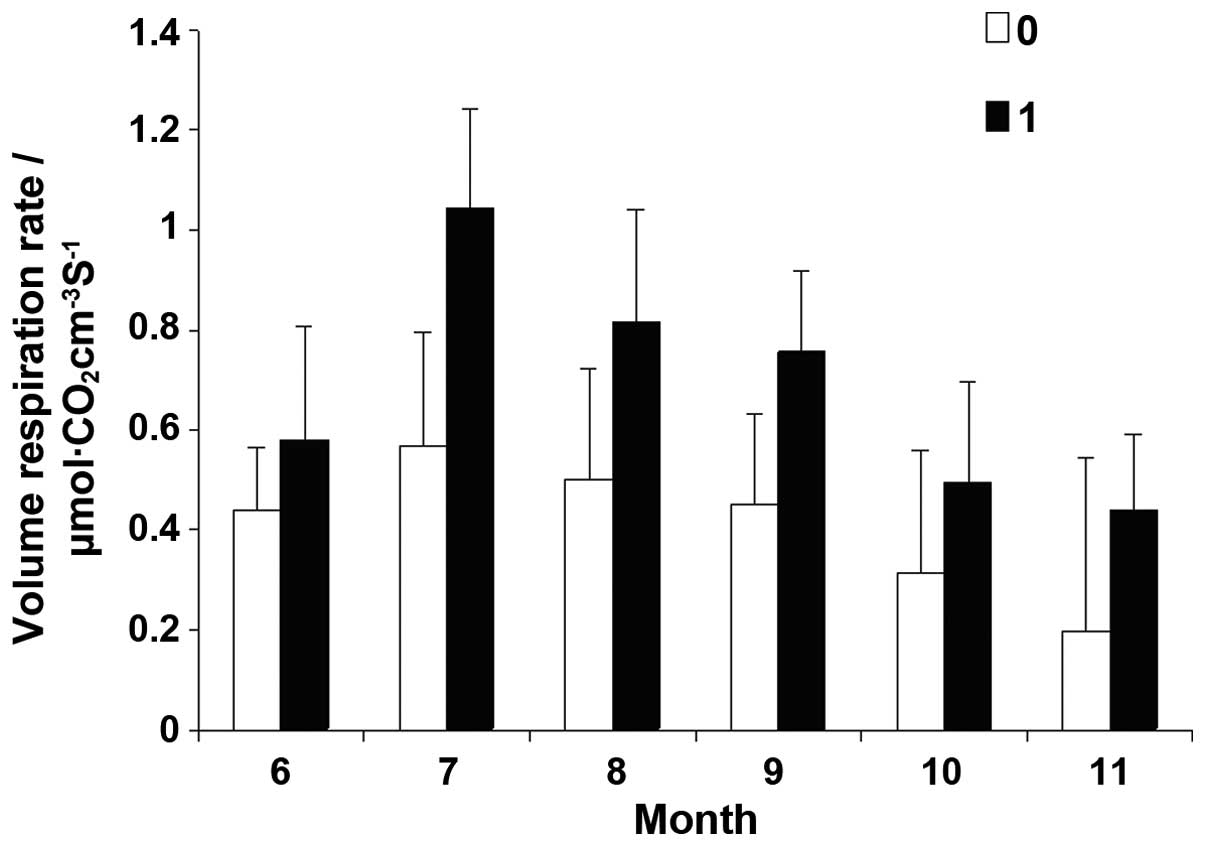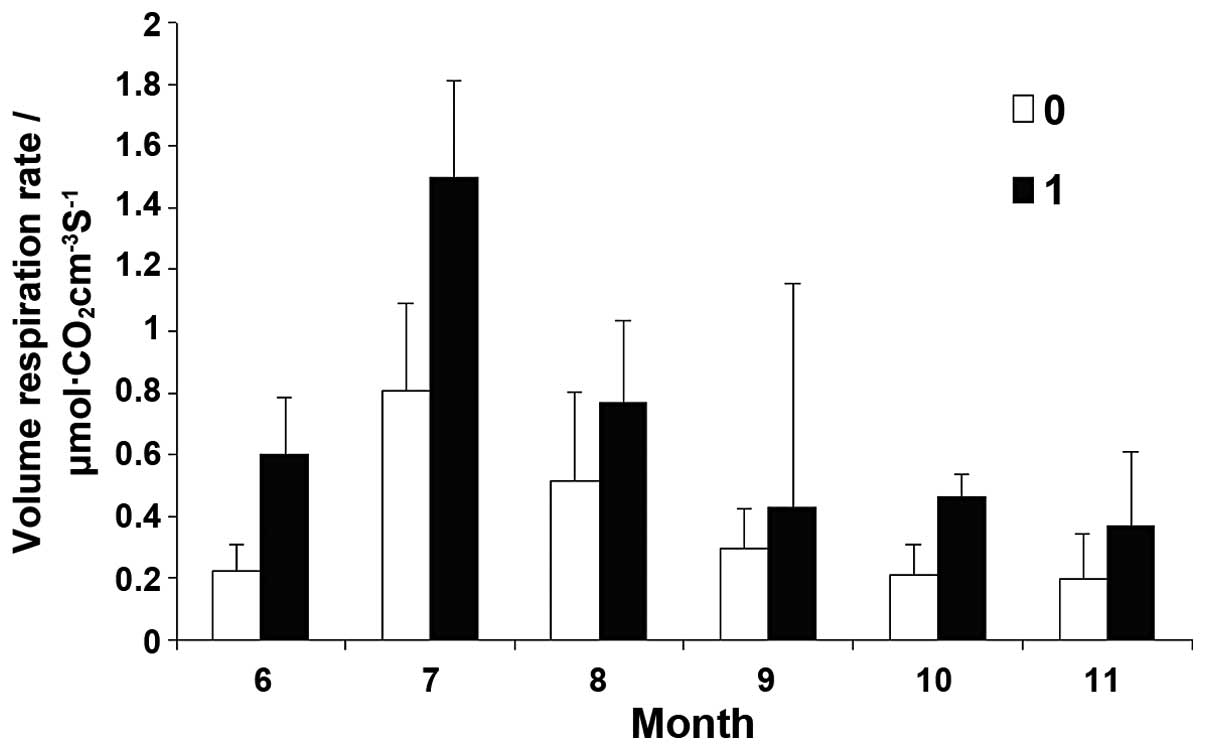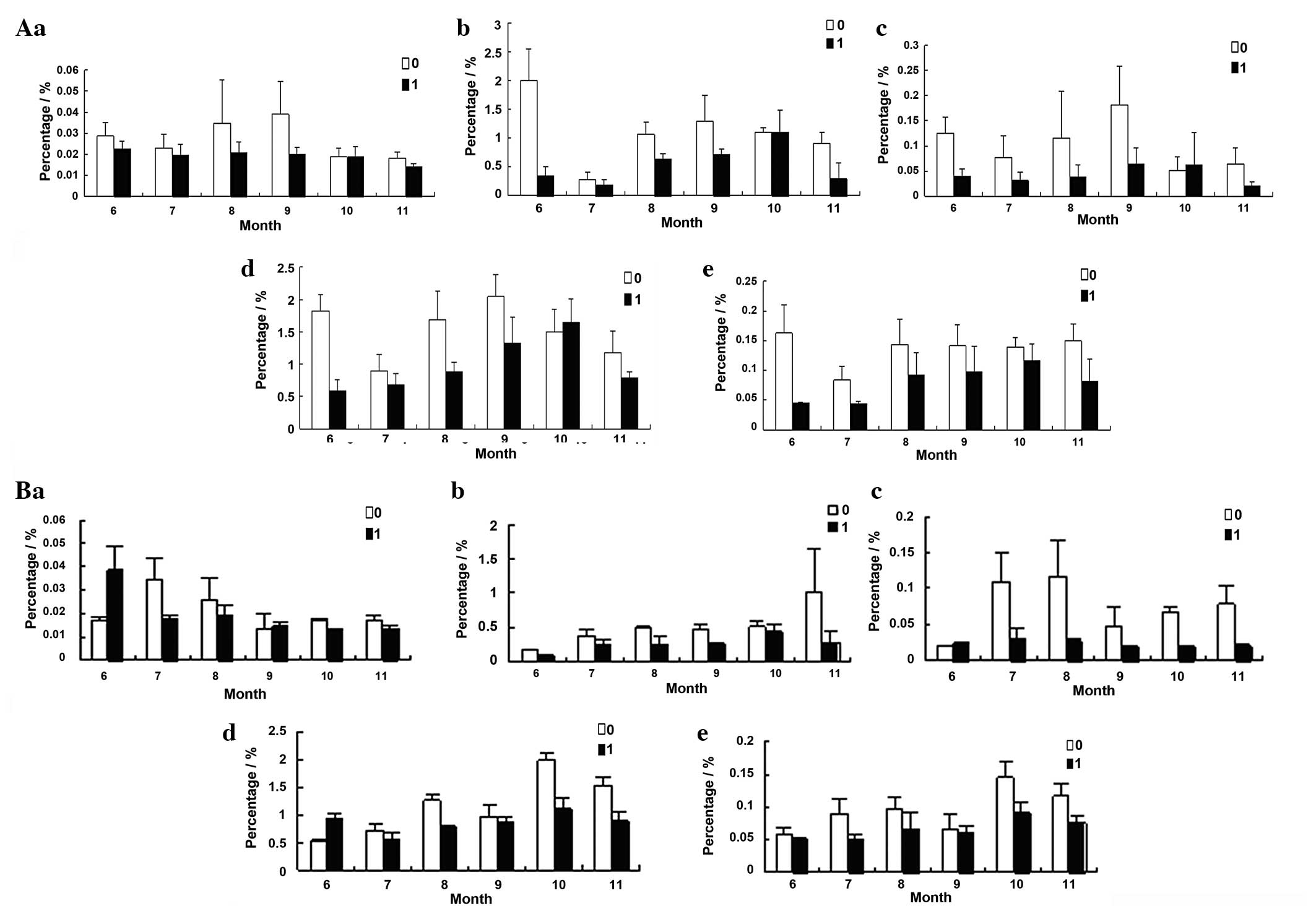|
1
|
Edwards NT, Shugart HH Jr, McLaughlin SB,
Harris WF and Reichle DE: Carbon metabolism in terrestrial
ecosystems. Dynamic Properties Of Forest Ecosystems. Reichle DE:
Cambridge University Press; Cambridge: pp. 499–536. 1980
|
|
2
|
Cao JM: Research on adaptation mechanism
of Glycyrrhiza uralensis to water deficiency. Journal of
Anhui Agricultural Sciences. 37:7504–7505. 2009.(In Chinese).
|
|
3
|
Zhang Y, Wang JY, Liu Y and Wang WQ:
Nitrogen nutrition in Glycyrrhiza uralensis Fisch. Journal
of Beijing Forestry University. 27(3): 57–60. 2005.(In
Chinese).
|
|
4
|
Sun ZR, Zhai MP, Wang WQ and Li YR:
Effects of density on seedling growth and glycyrrhizinic acid
content in Glycyrrhiza uralensis. Zhongguo Zhong Yao Za Zhi.
32:2222–2226. 2007.(In Chinese).
|
|
5
|
Atkin OK, Edwards EJ and Loveys BR:
Response of root respiration to changes in temperature and its
relevance to global warming. New Phytol. 147:141–154. 2000.
View Article : Google Scholar
|
|
6
|
Högberg P, Nordgren A and Ågren GI: Carbon
allocation between tree root growth and root respiration in boreal
pine forest. Oecologia. 132:579–581. 2002.
|
|
7
|
Hou JL, Li WD, Zheng QY, Wang WQ, Xiao B
and Xing D: Effect of low light intensity on growth and
accumulation of secondary metabolites in roots of Glycyrrhiza
uralensis Fisch. Biochem Syst Ecol. 38:160–168. 2010.
View Article : Google Scholar
|
|
8
|
Guo J, Wang JY and Koo MWL: Anti-oxidative
effect of glycyrrhizin on acute and chronic CCl4-induced
liver injuries. J Gastroen Hepatol. 21(Suppl 2): A1542006.
|
|
9
|
Zhai D, Zhao Y, Chen X, Guo J, He H, Yu Q,
Yang J, Davey AK and Wang J: Protective effect of glycyrrhizin,
glycyrrhetic acid and matrine on acute cholestasis induced by
alpha-naphthyl isothiocyanate in rats. Planta Med. 73:128–133.
2007.PubMed/NCBI
|
|
10
|
Tang B, Qiao H, Meng F and Sun X:
Glycyrrhizin attenuates endotoxin-induced acute liver injury after
partial hepatectomy in rats. Braz J Med Biol Res. 40:1637–1646.
2007. View Article : Google Scholar : PubMed/NCBI
|
|
11
|
Abe K, Ikeda T, Wake K, Sato T and Inoue
H: Glycyrrhizin prevents of
lipopolysaccharide/D-galactosamine-induced liver injury through
down-regulation of matrix metalloproteinase-9 in mice. J Pharm
Pharmacol. 60:91–97. 2008. View Article : Google Scholar : PubMed/NCBI
|
|
12
|
Armanini D, Mattarello MJ, Fiore C,
Bonanni G, Scaroni C, Sartorato P and Palermo M: Licorice reduces
serum testosterone in healthy women. Steroids. 69:763–766. 2004.
View Article : Google Scholar : PubMed/NCBI
|
|
13
|
Lee CH, Park SW, Kim YS, Kang SS, Kim JA,
Lee SH and Lee SM: Protective mechanism of glycyrrhizin on acute
liver injury induced by carbon tetrachloride in mice. Biol Pharm
Bull. 30:1898–1904. 2007. View Article : Google Scholar : PubMed/NCBI
|
|
14
|
Yoshida T, Abe K, Ikeda T, Matsushita T,
Wake K, Sato T and Inoue H: Inhibitory effect of glycyrrhizin on
lipopolysaccharide and d-galactosamine-induced mouse liver injury.
Eur J Pharmacol. 576:136–142. 2007. View Article : Google Scholar : PubMed/NCBI
|
|
15
|
Wang W, Hu X, Zhao Z, Liu P, Hu Y, Zhou J,
Zhou D, Wang Z, Guo D and Guo H: Antidepressant-like effects of
liquiritin and isoliquiritin from Glycyrrhiza uralensis in
the forced swimming test and tail suspension test in mice. Prog
Neuropsychopharmacol Biol Psychiatry. 32:1179–1184. 2008.
View Article : Google Scholar : PubMed/NCBI
|
|
16
|
Kim YW, Ki SH, Lee JR, Lee SJ, Kim CW, Kim
SC and Kim SG: Liquiritigenin, an aglycone of liquiritin in
Glycyrrhizae radix, prevents acute liver injuries in rats
induced by acetaminophen with or without buthionine sulfoximine.
Chem Biol Interact. 161:125–138. 2006.PubMed/NCBI
|
|
17
|
Gao X, Wang W, Wei S and Li W: Review of
pharmacological effects of Glycyrrhiza radix and its bioactive
compounds. Zhongguo Zhong Yao Za Zhi. 34:2695–2700. 2009.(In
Chinese).
|
|
18
|
Fitter AH: Morphometric analysis of root
systems: application of the technique and influence of soil
fertility on root development in two herbaceous species. Plant Cell
Environ. 5:313–322. 1982.
|
|
19
|
Lee MS, Nakane K, Nakatsubo T and Koizumi
H: Seasonal changes in the contribution of root respiration to
total soil respiration in a cool-temperate deciduous forest. Plant
Soil. 255:311–318. 2003. View Article : Google Scholar
|
|
20
|
Zhou XZ: The study of rapid quality
analysis method of licorice by UV-vis and infrared
spectrophotometry. Beijing: Beijing University of Chinese Medicine;
pp. 30–36. 2012, (In Chinese).
|
|
21
|
Ren J, Xu CY, Wei YB, Lin YM and Duan YH:
Seasonal dynamics and influence factor of root respiration of
Fraxinus mandushurica in the Changbai Moutain. Lin Ye Ke
Xue. 46:77–83. 2010.(In Chinese).
|
|
22
|
Zhao ZH, Cao JG, Fu YJ, Tang ZH and Zu YG:
Distribution characteristics of glycyrrhizic acid in wild and
cultivated liquorices and their applications. Zhiwuxue Tongbao.
23:164–168. 2006.(In Chinese).
|
|
23
|
Li CD, Dong HR and Li JC: Influence of
various ratios of nitrogen nutrition on photosynthetic and sugar
metabolism of cotton. Mian Hua Xue Bao. 15:87–90. 2003.(In
Chinese).
|
|
24
|
Olsthoorn AFM, Keltjens WG, van Baren B
and Hopman MCG: Influence of ammonium on fine root development and
rhizosphere pH of Douglas-fir seedlings in sand. Plant Soil.
133:75–81. 1991. View Article : Google Scholar
|
|
25
|
Wang DF: Regulation of agronomic measures
on the growth and development of Glycyrrhiza uralensis.
Lanzhou: Gansu Agricultural University; pp. 45–55. 2008
|
|
26
|
Maier CA and Kress LW: Soil CO2
evolution and root respiration in 11 year-old loblolly pine
(Pinus taeda) plantations as affected by moisture and
nutrient availability. Can J For Res. 30:347–359. 2000.
|
|
27
|
Zogg GP, Zak DR, Burton AJ and Pregitzer
KS: Fine root respiration in northern hardwood forest in relation
to temperature and nitrogen availability. Tree Physiol. 16:719–725.
1996. View Article : Google Scholar : PubMed/NCBI
|
|
28
|
Zhang J, Shen YB and Xu CY: Reviews on
root respiration and it responses to environment changes. Journal
of Northeast Forestry University. 35(2): 78–81. 2007.(In
Chinese).
|
|
29
|
Burton AJ and Pregitzer KS: Field
measurements of root respiration indicate little to no seasonal
temperature acclimation for sugar maple and red pine. Tree Physiol.
23:273–280. 2003. View Article : Google Scholar : PubMed/NCBI
|
|
30
|
Chen DH, Ye HC, Li GF and Liu Y: Advances
in molecular biology of plant isoprenoid metabolic pathway. Act Bot
Sin. 42:551–558. 2000.
|
|
31
|
Desrochers A, Landhäusser SM and Lieffers
VJ: Coarse and fine root respiration in aspen (Populus
tremuloides). Tree Physiol. 22:725–732. 2002. View Article : Google Scholar : PubMed/NCBI
|
|
32
|
Ryan MG, Hubbard RM, Pongracic S, Raison
RJ and McMurtrie RE: Foliage, fine-root, woody-tissue and stand
respiration in Pinus radiata in relation to nitrogen status.
Tree Physiol. 16:333–343. 1996. View Article : Google Scholar : PubMed/NCBI
|
|
33
|
Henry M, Edy AM and Marty B: Isolation of
licorice protoplasts (Glycyrrhiza glabra L. var. typica Reg.
et Hed) from cell suspension cultures not producing glycyrrhetinic
acid. C R Acad Sci III. 299:899–903. 1984.(In French).
|
|
34
|
Zhao ZH, Yu JH, Yang FJ, Zu YG and Cao JG:
Influences of artificial disturbance degrees on the contents of
Glycyrrhizic acid and flavonoids in different parts of
Glycyrrhiza uralensis. Sheng Tai Xue Bao. 24:2799–2803.
2004.(In Chinese).
|
|
35
|
Cao HL and Zhou YQ: Review of the
influencing factor of glycyrrhizic acid content in Glycyrrhiza
uralensis Fisch. Modern Chinese Medicine. 11(2): 6–10. 2009.(In
Chinese).
|

















